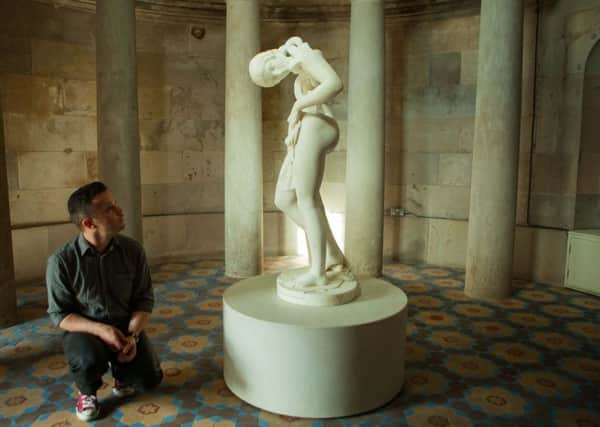Artist brings new vision to Burns Monument with female statue
This article contains affiliate links. We may earn a small commission on items purchased through this article, but that does not affect our editorial judgement.


Now the striking memorial to poet Robert Burns on Regent Road is to be opened up during the Edinburgh Art Festival to showcase a brand new work of art.
Inside the neo-classical pavilion, from where a specially-commissioned statue of Burns was relocated eight years after its unveiling amid fears of damage from a nearby gasworks, a female nude sculpture has now been installed. Edinburgh-based artist Jonathan Owen has transformed a life-size 19th-century nymph, originally created in Rome by the English artist Robert James Wyatt, into a new “site-specific” work.
Advertisement
Hide AdAdvertisement
Hide AdIt will provide a replacement for John Flaxman’s original Burns sculpture, which has been in the Scottish National Portrait Gallery since being moved there in 1839.
Owen’s work, which goes on public display today to coincide with the start of the festival, uses a set of marble chains, a bowed head and a crumbled body to suggest the impact of 200 years of the male gaze.
Owen, who specialises in breathing new life into old marble sculptures, said: “This is actually the first female figure that I’ve worked on and also the biggest.
“I’ve known about the Burns Monument for quite a while and knew it was specifically designed to house a marble statue. The building itself has become the monument over the years, even though it is usually closed to the public. But it actually makes more sense now that we have installed an object in the centre of it.”
Burns has partly inspired another of the special commissions at this year’s Art Festival.
Glasgow artist Graham Fagen’s series of neon installations, which have transformed the corner of New Street and Calton Road, recall both the ships on which the poet booked passages to the Caribbean in 1786, and the biblical story of Jacob’s Ladder, which is also the name of a nearby stairway to the Burns Monument on Regent Road.
Fagen’s work was unveiled days after it emerged that a £50,000 overhaul was being planned for the staircase, to remove graffiti, install lighting and install proper signage.
Advertisement
Hide AdAdvertisement
Hide AdThe artist said: “I suppose this work is really my monument to us all – everybody that has been here before us and will be here after us.
“It’s about humanity and the journey of life.
“The inspiration for it really started off with the concept of Jacob and the dream he has where he sees this ladder that ascends to Heaven. The other interesting thing about him is he sold his sons into slavery.
“I was also thinking about the geography of where we were, as Burns booked a passage from Leith Docks to Kingston, Jamaica where he would have worked on a slave plantation [as a bookkeeper].
“The inspiration also came from the Edinburgh town planner Patrick Geddes, who talked about the city being more than a place, but as ‘a drama in time,’ which I’ve nicked for the title of the work.”
DOWNLOAD THE SCOTSMAN APP ON ITUNES OR GOOGLE PLAY